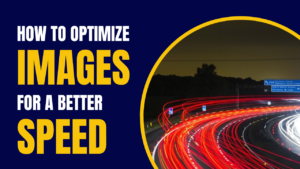
To succeed in SEO, you must add links (internal and external) and in your content. This not only improves the user experience, but also sends a message to Google. However, for the information transmitted to search engines to be positive for your SEO, you must pay attention to the HTML link anchors you use! Discover without further delay everything you need to know about this essential element in natural referencing.
Express reading: 8 HTML anchors and 5 mistakes to avoid in SEO
In HTML, there are 8 different types of links that you will find on the web. Not everyone has the same SEO power and some should be used sparingly, as they risk generating penalties from search engines.
8 Types of Link Anchors
- Exact match: You use the targeted keyword directly.
- Partial match: You associate other terms with the targeted query.
- The brand: the anchor contains the name of the company.
- Generic dull: learn more, click here, this link, etc. are considered generic words.
- Semantic words: the anchor corresponds to a determination taken from the semantic field corresponding to the key query.
- Title: you directly take the H1 of the targeted page.
- URL: the target address is directly used as an HTML link anchor.
- Image: The anchor contains no text. To access the destination page, you must click on an image.
5 Link Anchor Optimization Mistakes
- Using only one type of link.
- Keyword stuffing in HTML anchors.
- Redirection to low-quality sites.
- Lack of relevance between the content and the link target.
- Too frequent repetition of the same link anchor.
Want to learn more about using these different types of HTML anchors and how to avoid a Google penalty? Just read on
What is an anchor link in HTML?
That’s an anchor text, When you click on it, you are taken to another web page. This is the visible and clickable part of a hyperlink (below the text). The link anchor is generally characterized by the following HTML code:
<a href="https://scrowp.com/internal-linking-for-seo/">That's an anchor text</a>
In natural referencing, there are 8 different categories of link anchors that you can use in your internal linking or to implement your internal linking strategy. Let’s discover them together…
1- The anchor with exact match
Let’s imagine that a person decides to direct their readers to this article and uses the expression “link anchor” to do so.
“In SEO, link anchors have a real importance in the positioning of your website: learn how to optimize them! »
In this case, we speak of an exact match. Indeed, this person uses the keyword that I chose as the main subject of my publication.
The advantage of this type of link is their clarity. Indeed, Internet users and search engines will have no trouble understanding the subject of the publication. Google views anchor texts as the description of a link. My article thus gains relevance on the keyword “link anchor”.
SEO effectiveness: Important Risk of penalty: Significant
2- The anchor with partial match
Similar to an exact match, a partial match uses keywords related to the topic of the page. There is, however, a difference.
“Link anchor: pitfalls to avoid” or “tips for your link anchors”… Here are two examples of partial match link anchors. Indeed, the main keyword is used, but it is not the only one. The extra words make this anchor a partial match, not a perfect match.
This type of text has several advantages. First of all, it is possible to modify it so that it is well integrated into the text of the publication. Then, because the main keyword is used, it helps keep the page relevant.
SEO effectiveness: Important Risk of penalty: Moderate
3- The brand
The text of this type of anchor therefore uses a brand or company name. Using the expression “scrowp” to direct to an article hosted by the website of the same name constitutes a so-called “brand” link anchor. It is easy to understand that the page to which the link points is associated with this site.
Google considers this a healthy practice and rewards it by improving the visibility of the site. And because the name is linked to the brand’s core business, readers have a good idea of the type of content the site offers. If you use the anchor text “Starbucks”, I know the post will be about coffee shops. So try to use this type of link anchor when the brand is quite well known.
SEO effectiveness: Moderate Risk of penalty: Low
4- The generic anchor
Generic anchors can be used when you want to distract your readers. In this case, the link is not included subtly within your content. Here are some examples of generic anchors:
- Click here
- The page
- The article/post
- Learn more
- Read more
- Shop now
- …
This involves inviting the Internet user to click on the link (“Click here and…”). It is therefore the most direct way to invite your readers to visit a page. On the other hand, they do not allow search engines to know the subject of the link. Keep this in mind when considering using generic anchors.
SEO effectiveness: Low Risk of penalty: Low
5- Semantic words
Here, this simply refers to keywords that are linked together by the same theme. The theme of your main key phrase. Google automatically associates semantic keywords with each other.
So, if you want to post a link pointing to similar content, but want to avoid using the same keyword, using the semantic field is your best option.
SEO effectiveness: Important Risk of penalty: Moderate
6- Titles of publications
Using the post title in the link anchor seems quite natural. This allows your readers and search engines to know precisely what the content is about.
The only drawback is that it is sometimes difficult to integrate this type of anchor link into your text. It’s all a matter of layout, it’s up to you! The important thing is that the link is useful to your readers.
SEO effectiveness: Moderate Risk of penalty: Moderate
7- URL’s
This is simply a URL, with no additions or modifications. So, instead of writing text, you will simply copy the URL of the page. It’s not necessarily very aesthetic, but it has the merit of being clear.
To remember :
- Favor this type of anchor link when you want to direct to the home page of a website (https://www.scrowp.com/ for example).
- Avoid long and complicated URLs like this one: https://www.scrowp.com/commnity/how-to-increase-your-store-SEO-to-rank-on-first-page-of-google-so-quickly.
The fact is, if the URL is not short and precise, the anchor link will not be pleasant to read.
SEO effectiveness: Low Risk of penalty: Low
8- Images
By clicking on an image, you are automatically taken to another web page. In this case, the image acts as an HTML button. The link anchor resides in the alt attribute of the image tag.
If you are unfamiliar with the alt attribute, know that it is used by search engines to “read” the image. It plays the role of description and allows indexing robots to understand it. So don’t forget to fill in the alt tag when you use this type of button. This is where your anchor text should be.
SEO effectiveness: Low Risk of penalty: Low
As you will have understood, link anchors are visible to both Internet users and Google indexing bots. This is why they are so important!
Link anchors therefore have an influence on the natural referencing of your site.
Indeed, they give valuable clues about the content to which they refer.
Try to favor links naturally integrated into the text. This means they are relevant. It is normal, when writing an article, to want to provide the reader with the best possible reading experience. What is the best way to insert a link in a post? Probably by making sure it fits the text well. Everyone is free to have different tips. The options are varied.
The 5 mistakes to avoid at all costs if you want to avoid the Google penalty
1- Use only one type of link anchor
There are 8 different options. You can modify them all to meet your needs and create 64 new types of link anchors. Okay, maybe I’m exaggerating, but you get the idea. Why vary?
First of all because it is never good to limit yourself. Then because you incur penalties. It is impossible to include your anchors in a natural way using just one type: you have to adapt on a case-by-case basis. Moreover, the variation is rather rewarded by Google.
2- Use lots of keywords in your anchors
As we saw previously, link anchors send a signal to Google. This therefore means that they have an impact on relevance and SEO. Keep in mind, however, that harmful practices exist and that they are no longer rewarded.
There is no doubt about it, overloading your link anchors will earn you penalties. So, avoid annoying Google!
To remember : - If you want to use keywords, do so sparingly and only when absolutely necessary. - One or two keywords are enough and you are sure not to be penalized. - Use keywords when really necessary. If this is not the case then I advise you to avoid this practice.
3- Direct readers to questionable websites
Unless your site is also a dubious site, you should avoid this type of association. Try to only post links to quality sites. Directing your readers to shady websites doesn’t make a good impression.
An advice If you use extensions like AdBlock, pause them before checking the quality of the pages you plan to include. Some pages may seem normal and even enjoyable to read only because all the bad stuff has been blocked out. Be aware that your readers do not always use these extensions. You could therefore put them at risk if you do not ensure the quality of the pages before creating your external links.
4- Not being relevant
As I’ve said many times before (I’ll say it again, because it’s very important): the anchor link provides information to both search engines and readers. So make sure your text is relevant and informative! If you’re having trouble doing this because you’re afraid it will be considered spam, I recommend including it in relevant text.
Google is “smart” enough to understand a word by analyzing the text that accompanies it (the context). The text surrounding your link is therefore taken into account. Thus, Google will understand the subject, even when the anchor link does not include any keywords, if it is surrounded by relevant text.
5- Use the same anchor text several times for the same URL
Be aware that this is spamming (especially if it involves external links). Remember: avoid spam! If you want to improve the SEO of your site without cheating, these practices should be avoided.
Sometimes you get so excited about sharing a link to something you really liked and don’t pay attention to the link anchors. This is why you should always check them before publishing them to ensure that they are not considered spam.
Conclusion
Adding links is essential for your SEO, because they allow indexing robots to better understand the theme of the pages on your site. To avoid always offering a raw and unreadable URL, you use HTML anchors. These link anchors are then taken into account by search engines, which will influence your positioning in the SERP.
While the “dad” SEOs understood the trick and excessively overoptimized their anchors, Google reacted. In 2012, the algorithm update known as “Penguin” shook up the results pages. What until then was only considered optimization now became spam!
This is why I strongly advise you not to overuse keywords in your link anchors. Stay natural, think about the Internet user, and link your pages in a relevant way.
Up to you !





